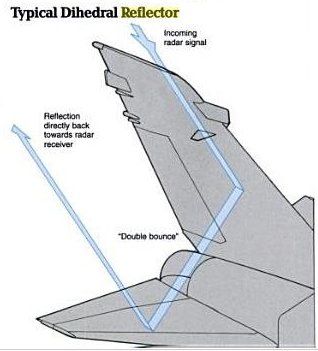Best Fighter Jet In History Grounded By Bees
F-22Beeeeeeeeeesssssss
By
Kelsey D. Atherton Yesterday at 9:46pm
Carlos Claudio, U.S. Air Force courtesy photo
Bees On An F-22
Look at this little swarm on this expensive plane.
Drones aren’t normally a problem for the F-22. The U.S. Air Force's advanced stealth fighter is built to clear the sky of any hostile aircraft, be it another fighter, an encroaching bomber, or even an unmanned aerial scout. It turns out, however, there’s a kind of flyer that even the F-22 can’t defend against: bees! No, really. Bees.
In June, a swarm of bees found its way into the exhaust nozzle of an F-22 at Joint Base Langley-Eustis in Virginia. Rather than exterminating the bees, the maintenance crew that discovered the swarm decided to find someone who could relocate the bees.
From the
Air Force:
Andy Westrich, U.S. Navy retired and local bee keeper, arrived on base with the needed materials and supplies. According to Chiarantona, Westrich said the swarm was one of the largest he had ever seen. He was escorted to the aircraft and used vacuum hoses to safely corral the honey bees off of the aircraft into large buckets. He then took the bee's home and found that, as a hive, they weighed eight pounds which calculates to almost 20,000 bees!
"The honey bees most likely came from a much larger bee hive somewhere else on base," said Chief Master Sergeant Gregg Allen, 192nd Maintenance Group Quality Assurance chief, who also happens to be a bee keeper. "Bee hives are constantly growing and they eventually become overcrowded. Around springtime, the bees will make a new queen, scout for a new location and take half of the hive with them to that location."
The bees may have just been resting on the jet on their way to find a new home for their queen, though there was also a chance the swarm could have built a hive right there, in the exhaust nozzle of the
$143 million jet fighter. Before that could happen, the beekeeper relocated the swarm to the hive of a beer producer, which will use the honey.
Once that beer is ready, I can imagine the mechanics getting together over a round of a brew that I can only hope will be named Stealth Honeybeer, and telling the tale of the time a jet was grounded, if only for a day, by a swarm of bees.
Check out some more pictures of the swarm below:
Carlos Claudio, U.S. Air Force courtesy photo
Bee Swarm Flush With F-22
This F-22 is the first to win any Bee Beard contests.
Carlos Claudio, U.S. Air Force courtesy photo
Removing Bees From A Jet
This is the easiest and safest way to defeat a swarming tactic.
Carlos Claudio, U.S. Air Force courtesy photo
Scraping The Last Of The Bees Off The Jet
The trick with swarms is there are just so dang many of them.
Carlos Claudio, U.S. Air Force courtesy photo
Beekeeper Andy Westrich
This is the retired U.S. Navy veteran who, in his post-service life as a beekeeper, removed bees from a jet. It is probably the coolest beekeeper story I've ever heard.
Tags:
by Taboola
Sponsored Links
You May Like
35 Places You've Never Seen but Wish You Had (photos)www.thefunkyruca.comThe most addictive game of the year! Play with 14 million Players now!Forge Of Empires - Free Online GameEnd Your Nightly Snoring Nightmare With This Simple SolutionMy Snoring SolutionThe Ultimate Way to Get Cheap Hotel RoomsSave70Now You Can Track Your Car Using Your SmartphoneTrackr BravoAre you a strategic thinker? Test your skills with millions of addicted playe…Stormfall: Free Online Game
Want more news like this?
Sign up to receive our weekly email newsletter and never miss an update!
our privacy policy.
Related Content

















 i could go on but jeremy clarkson and michael mcintyre beat me to it.
i could go on but jeremy clarkson and michael mcintyre beat me to it.


